In this article I’m going to show you how to make a quick and pretty simple storm glass. The ingredients are not something that you’d normally have lying around the house. But, they are all easy to buy now, from places like eBay and Amazon, so get some in to prepare for when the SHTF.
Ingredients:
- 2.5g Potassium nitrate solid. Sometimes called saltpeter and you can buy it for preserving meats. You can also buy a product called Spectracide Stump Remover which is around 99.5% potassium nitrate. You can make a smoke grenade using this product.
- 2.5g Ammonium chloride solid. You can buy a solution of this from fish tank supplies, but it’s the solid you need, not a solution
- 33 ml distilled water.
- 40 ml of alcohol. This can be ethanol or methanol (I used methanol) and you could experiment with 100 proof vodka and grain spirit if you’ve no other available. Also, if you’re distilling your own alcohol you can try that
- 10g Camphor solid. This is useful to have in your store for other uses, including medicinal
- A long thin stoppered glass jar or tube. I happened to have a Quick Fit glass tube and stopper in my home from my old chemistry days, but you could use anything, including jars, as long as they are very clean and dry
How It’s Made: Creating the Crystal Solution
Weigh out / measure your ingredients in preparation. Try to be as accurate as possible. You’ll be making two separate solutions that you’ll mix together.
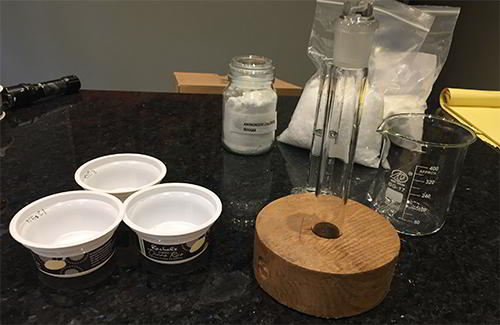
Making Solution 1:
Place the potassium nitrate and ammonium chloride and stir until dissolved. Put this to one side.
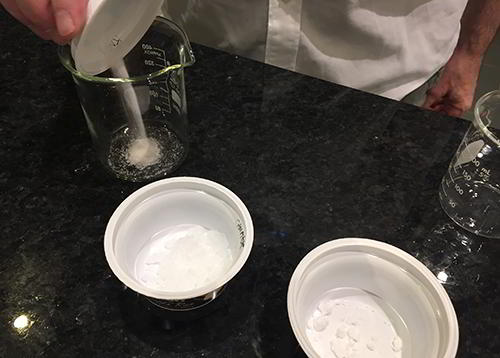
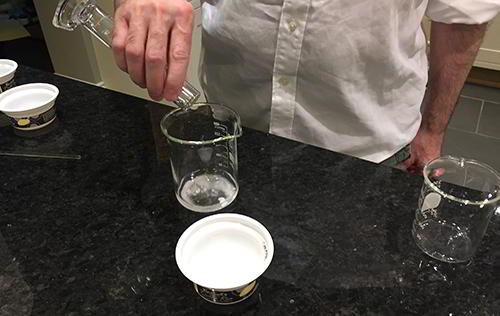
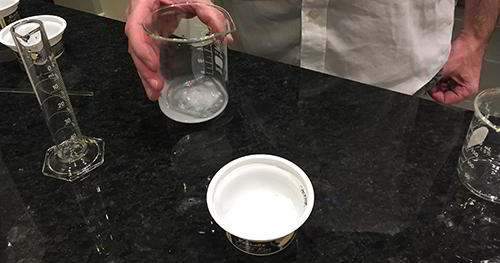
Making Solution 2:
Add the Camphor solid to a beaker or similar, and stir in the 40 ml of alcohol until dissolved.
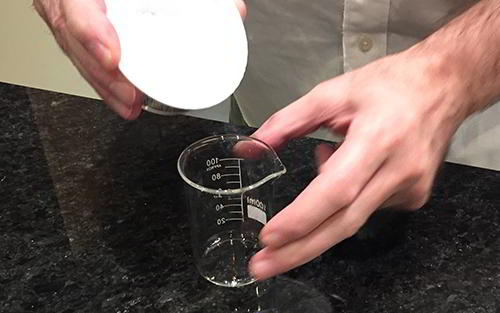
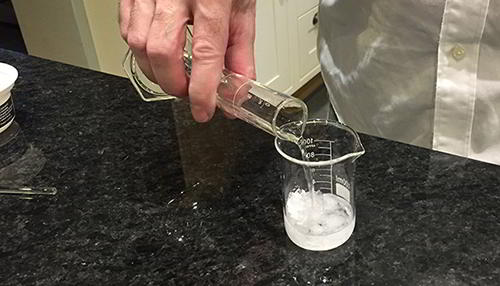
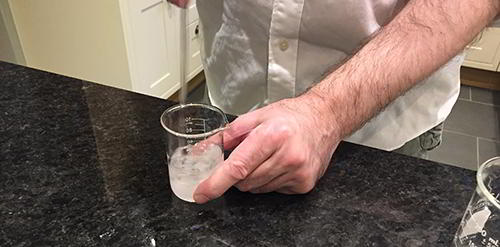
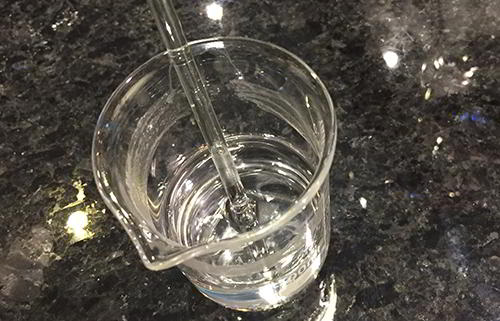
Mixed Solution:
Now take solution 1 and solution 2, and mix them together by stirring. Alcohol and water should mix well as they have a similar chemistry, but camphor doesn’t like water. It’s likely you’ll need to warm them up a little and stir to mix.
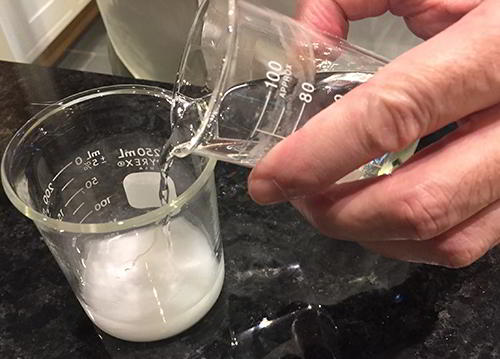
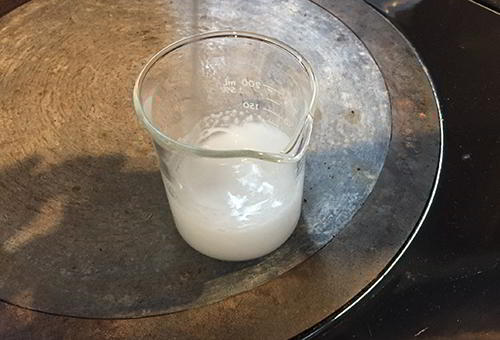
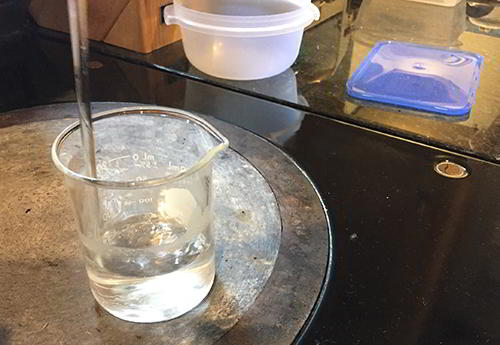
How It’s Made: Making the Storm Glass
Take your mixed solution and slowly pour it into the thin-stoppered glass tube.
If you’re a crafty person, who knows how to work glass, you could create a sealed unit.
Keep your storm glass outside or in a porch.

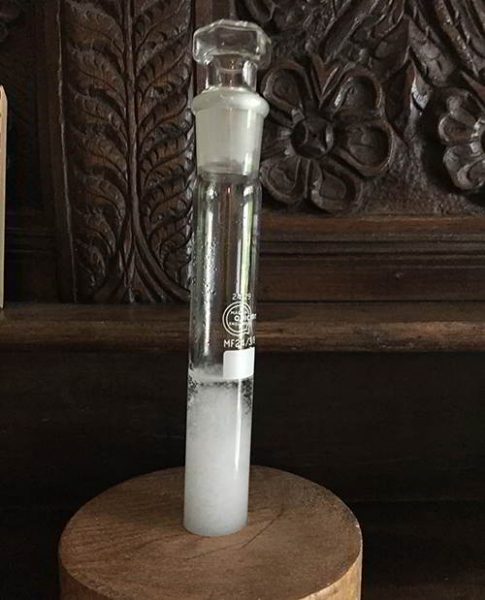
How to Read Your Storm Glass Why Does The Storm Glass Work?
Why Does The Storm Glass Work?
There are a few theories about how a Storm Glass works. The most likely is that the solubility of the crystals in the solution is affected by the temperature and pressure of the outside. This then allows the crystals to either stay in solution, or crystallize out to varying degrees.
You may also like:
 How to Find the North Star in Less Than One Minute
How to Find the North Star in Less Than One Minute
H2O Dynamo – The DIY Device That Turns Air Into Fresh Water! (Video)

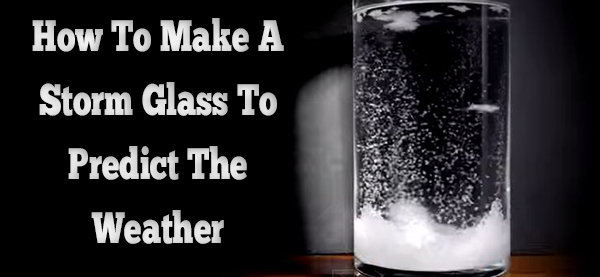




















Would procuring these materials get you on a WATCH LIST?
Only if your purchasing very large quantities….
You can buy stump remover at any garden shop. You don’t need 50 pounds of it, just a small can should do. Moth balls are camphor. I think you can buy them at Wally World. Shouldn’t put you on the watch list. Denatured alcohol is available in big box hardware stores or paint stores.Ammonium chloride is an unknown to me, but the quantity you would be buying for this project shouldn’t trigger any alarms. Obviously you won’t go shopping for 500 pounds of it. That might get a visit from the ATF.
how does the outside pressure create at change when the glass is stoppered?
The glass column will reflect atmospheric changes even if you can’t perceive them. A stoppered glass will contract or expand depending upon high or low atmospheric pressure. You may not see it actually expand and you may not be able to measure the expansion or contraction without very precise instrumentation, but it will be there. Pressure change activates the chemical reaction. Probably won’t work in a very thick glass column, depends upon test tube thickness glass. Might even work without a stopper but the chemical proportions will change as the alcohol and water ratios change from evaporation and that will affect the reaction..
Thoughtful comments, LC Chuck.
I think a direct refutation of your statements would not be possible without precise measurements, but let me throw in a few ideas, despite this area of science is 50 years behind me.
The “thin glass tube” pictured in the article appears to be a Pyrex or Kimax glass stoppered round bottom test tube, far from being thin walled and being Pyrex or Kimax, it has a very low coefficient of thermal expansion.
According to Young, the ambient pressure on solids and liquids is not a significant factor affecting the coefficient of expansion, especially within the expected change of barometric pressure experienced on the Earth’s surface. What might be possible is physical distortion of the tube due to pressure which point I think you did mention, but again, round tubes have amazing resistance to deformation, regardless of thickness, and considering the very low changes in pressure observed.
Now, even if there are pressure changes in the tube, they are possibly due totally to a change in temperature. And again, small pressure changes on solids and liquids are insignificant on internal stress, expansion phenomena, and possibly chemical changes.
As for chemical changes, no mention of the purities of some the chemicals mentioned are specific. Be it “stump killers” or moth balls, impurities may be present which might have a profound affect on the solution’s behavior
A very fun topic! maybe I will build one of these.
Dave: A very well-thought out thesis. You raise very valid points. Perhaps it is just one of those things that there is no logical explanation why it works, it just does.
There is absolutely no scientific support for a “witching stick.” To the best of my knowledge, it absolutely defies any scientific explanation yet, more times than not it seems to work. It is just an absolutely ridiculous notion that the stick somehow detects water and moves toward the ground where water is located. I haven’t explored the most recent musing on water witching, but the last I looked most folks just scratched their heads and said, I dunno, but he found a great spot for a well.”
I must admit I had truly overlooked the very likely possibility of moth balls and stump remover not being laboratory quality chemicals containing varying amounts of contaminant. I am confident that there is no certification on a package of moth balls that they are 100% pure camphor. In fact I have never examined the label of a package of moth balls to see exactly what they do contain, just relying on my olfactory nerve to verify that, indeed, they sure smelled like moth balls. I am going to have to make a trip to Wally World now just to satisfy my curiosity as to what “moth balls” actually are made from.
I have a can of stump remover in my garage and I have examined the label to see what it contained and while I can’t recite its contents from memory, I know it has at least three ingredients. I don’t recall if my brand is 95% potassium nitrate.
Thanks for your post. It really raises some interesting questions. Maybe it is just, “I dunno but it works.”
A useful post. Thank you, Mr. Davis.
Must it have a glass stopper or will a screw-on cap do the job? Thanks.
Okay, I looked up storm glass on Wikipedia which, as everyone knows, is never wrong. According to Wiki, the storm glass was invented by a British admiral around the 1850s. Also according to Wiki, The Journal of Crystals (Did any of us know there was such a journal?) opined that the change in the appearance of the crystals was due to temperature change.
You can buy a ready-made one from Russels for Men for only $179.95. Can’t you buy a barometer for less than that?
Wow, that’s expensive. I got mine for less than $30. Let me find the link..
https://www.chapmansupply.co/product/storm-glass
I don’t use the metric system and I see that it is creeping further into our society. I know this puts me in the fuddy-duddy camp and now I am going to put me in the tin foil brigade but I think the metric system was one of the first alien invasions. Yes I do here different drums and they sound like (call to arms).
Base 12 freedom units: good enough for the moon!
Where do you put this storm glass?
‘Where the sun doesn’t shine’ is what I was told.